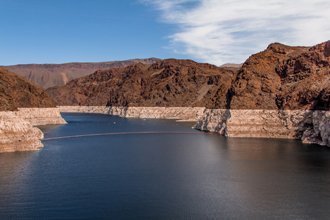Climate Adaptation and Drought

EPA works with drinking water utilities to provide clean and safe drinking water. This goal can be challenging under some extreme weather events such as drought.
Short-term (seasonal or shorter) drought risk is projected to intensity across most of the U.S. Long-term droughts are expected to increase in large areas of the Southwest, southern Great Plains, and Southeast. Short-term and long-term drought both threaten efforts of drinking water utilities to maintain safe and effective service now and in the future.
During drought, water utilities may face a reduced volume of water or loss of water supply sources. This can occur simultaneously with increased demand from customers.
Drought can reduce short-term water sources, such as reservoirs or lakes. Drought can also affect longer-term water storage or supply such as mountain snowpack. An increase in drought risk can necessitate drinking water utilities to reassess and revise long-term plans to ensure access to source water availability.
A reduction in available source water can concentrate contaminate levels in source waters and lead to diminished source water quality. Poor source water quality can affect treatment costs and the ability to meet drinking water standards.
The reduction in available water supply can also lead to the consideration and development of alternative water sources, such as groundwater. In coastal areas, increased groundwater withdrawals may exacerbate other climate impacts such as saltwater intrusion and subsidence.
In some areas, drought and associated periods of high temperatures will contribute to dry conditions that intensify wildfires. Wildfires can:
- Threaten water facilities.
- Increase erosion.
- Adversely affect source water quality.
- Diminish air quality.
- Pose significant public health effects, such as diminish air quality.
